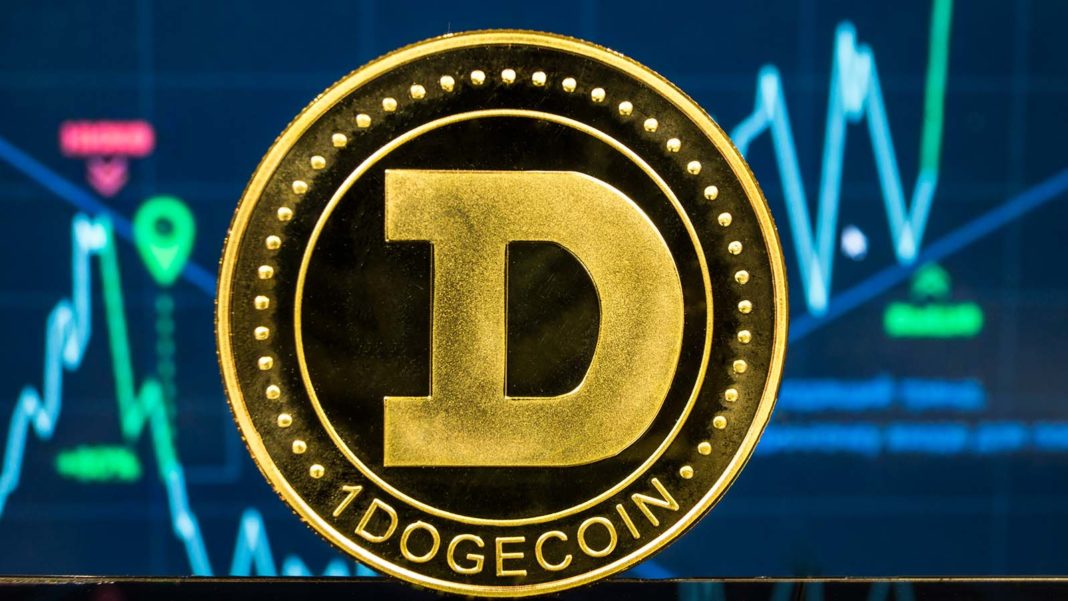Dogecoin (CCC:DOGE-USD) is actually more popular with the general public than Bitcoin (CCC:BTC-USD) or Ethereum (CCC:ETH-USD). That is the result of a recent study by The Advisor Coach, according to an article by Cryptoslate. Dogecoin and Shibu Inu (CCC:SHIB-USD) were the most searched tokens on Google in 30 states in the U.S.

Source: Shutterstock
In addition, Dogecoin was the most Googled in 23 states, including Florida, Illinois, and Michigan. This was according to an article by Business Insider which had access to The Advisor Coach’s research report.
This is somewhat ironic, as Dogecoin is only the 10th largest cryptocurrency with a $28.6 billion market value. By contrast, Bitcoin is the largest crypto with a $1.077 trillion market capitalization. It has a price of around $58K per Bitcoin token vs. just 21.4 cents for Dogecoin.
So What Is Going On Here?
The fact is people remember the odd situation. They know that Dogecoin stands for a crypto coin related to a dog and that the whole thing really makes no sense. In fact, some will probably remember that Elon Musk was publicly tortured about it on a Saturday Night Live skit in May 2021. He even called it a “hustle.”
That must have stuck in a lot of peoples’ minds. They see Dogecoin as a sort of alt play on crypto, which itself is already an alt play on what its proponents call “fiat” currency. By fiat, they mean that government authorities can dictate the rules about a currency.
By contrast, cryptos are decentralized, where everyone is in charge — by democracy, in most cases. And within that arena, Dogecoin is an even more oddball, having started as a joke.
It Could Be Performance
And by the way, it’s not as if Dogecoin has been a better investment play. Bitcoin has risen a lot more than Dogecoin, by definition of its much larger market cap. But maybe it is just a matter of — what have you done for me lately?
This year Dogecoin has clearly outperformed Bitcoin. At the end of 2020, Dogecoin was priced at 0.5685 cents. That means so far this year, as of today at 21.4 cents, it has 38.3 times its price at the end of 2020.
By contrast, Bitcoin ended last year at $29,374. So at today’s price of $57,000, it is almost exactly two times the price.
The point is people are going to pay way more attention to an asset that goes up 38 times in less than one year vs. one that just doubles. What Dogecoin has done for its adherents lately is dramatically outperform Bitcoin. That could account for a great deal of its huge popularity, along with its oddball nature.
What to Do With Dogecoin Now
Dogecoin crypto has been drifting lower. In the past three months, it is down from 27 cents to 21.4 cents, or a drop of 19.3%.
But the problem is it could keep falling. There is really nothing fundamental that allows anyone to determine its underlying value, other than simply the pull between demand and supply.
So, just as the crypto rose almost 38 times this year, it’s not out of the question that it could fall just as dramatically. After all, if you had a gain of 30 times or even one-third of that, wouldn’t you start taking profits?
Yes, you would sell. And that’s probably a good portion of the explanation why Dogecoin has been drifting lower these past months. And there is no way to tell how long this profit-taking could last.
I suspect it could last until the end of the year. If people believe that tax rates will go up next year they will likely take extraordinary profits this year.
On the other hand, most people who made huge gains this year have likely not held the position for over one year. After holding one year, the long-term capital gains tax rate is much lower than the short-term rate. This could mean more selling could occur through next year as people wait to harvest large gains at a lower rate.
What this means is that Dogecoin is likely to keep on drifting lower. Most people looking to take a large position will likely wait.
On the date of publication, Mark R. Hake did not hold any position (either directly or indirectly) in the securities mentioned in this article. The opinions expressed in this article are those of the writer, subject to the InvestorPlace.com Publishing Guidelines.
Mark Hake writes about personal finance on mrhake.medium.com and runs the Total Yield Value Guide which you can review here.






